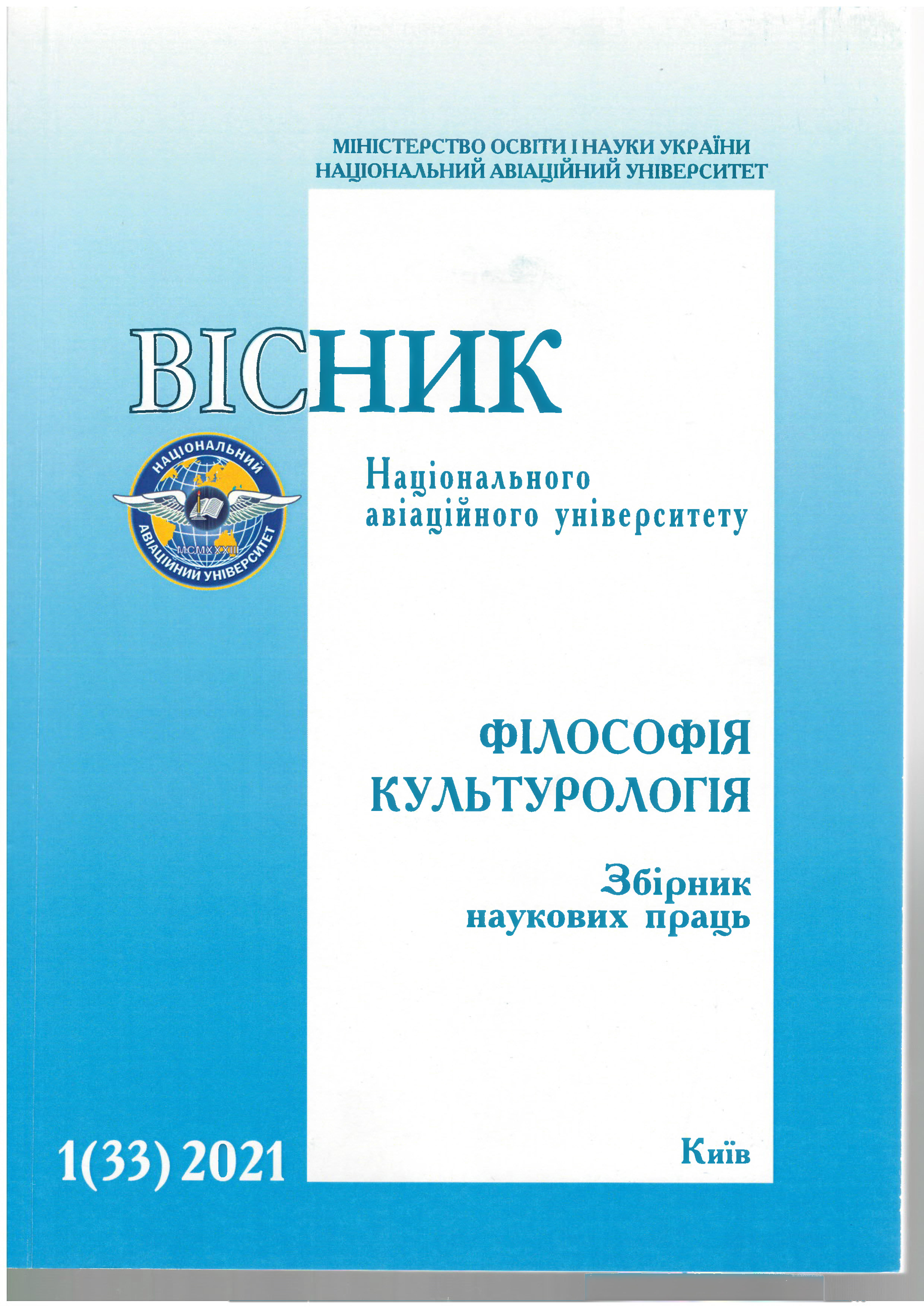INTERNET INTERACTION AS A PHENOMENON OF MASS CULTURE IN THE AGE OF INFORMATION SOCIETY
DOI:
https://doi.org/10.18372/2412-2157.33.15657Keywords:
Internet interaction, mass culture, information and communication technologies, transformation, Information era, informatization of societyAbstract
Introduction. The beginning of the XXI c. was marked with the ever-wider use of computers and information technologies in various spheres of life. The mass culture of the information age is the backdrop against which a complex and heterogeneous system of interaction unfolds. The Internet allows various local networks to interact with each other using certain standards and agreements that were adopted while creating the global network. The Internet is a powerful information channel, analyzing of which means to looking into future. The aim and tasks.It is important to identify the transformation of the processes of Internet iterations in mass culture and their impact on mass culture in the information society. Research methods. The paper uses cultural-historical, socio-cultural, and synergistic approaches. The cultural-historical approach allows us to find out the genesis and trace the stages of the development of Internet communication in mass culture in the historical context. The sociocultural approach studies Internet communication from the standpoint of various cultural influences. A synergistic approach explores Internet communication as a dynamic and variable structure. Research results. The Internet is an integral part of the audiovisual and electronic culture of nowadays, which is the subject of many studies in philosophy, psychology, cultural studies, and others. With the advent of the Internet, mass culture has begun to spread much faster and more efficiently, the traditional forms of social interaction are being transformed. Discussion. There are two tendencies of the role of Internet interactions in mass culture. On the one side, the Internet brings linguistic changes to the cultural context; positively affects the thinking of people, ensuring the fusion of figurative and logical display of reality; destroys age-old, racial, territorial, and any other barriers. It is a universal means of transferring cultural values and, at the same time, is the largest repository of cultural artifacts. This is a unique opportunity for personal self-realization in communication with other people. On the other side, the technical features of the Internet technology and the specificity of virtual interactions on the Web reinforce the confrontation between traditions and innovations, deepen the gap between generations, and change the hierarchy of values and priorities. All this, on the contrary, complicates the process of organizing the structure of interaction, leads to disruptions in the work of social communications. Conclusion. The processes of social interaction in the mass culture of the XXI century have been transformed, they have received the opportunity to interact without direct contact of people
with each other. The primary task should be to saturate the Internet space with high-quality samples of culture, for the transmission of the basic values of modern society and the formation of the spiritual world of a modern person, especially young people.
References
MacDonald D. A Theory of Mass Culture / MacDonald D. //
Mass Мedia and Mass Man. – N.Y., 1968. – P. 12-24.
Дротянко Л. Г. Масова культура в інформаційному сус-
пільстві / Л. Г. Дротянко // Вісник Національного авіаційного
університету. Серія: Філософія. Культурологія: зб. наук.
праць. – К.: Вид-во Національного авіаційного університету
«НАУ-друк», 2009. – № 1 (9). – С. 141-144.
Антипова О. П. Соціокультурний простір інформаційної
ери: взаємодія природничої та штучної мов: монографія. – Дніп-
ропетровськ: Дніпроп. держ. ун-т внутр. справ, 2013. – 175 с.
Бацевич Ф.С. Основи комунікативної лінгвістики /
Ф.С. Бацевич. - К.: Видавничий центр «Академія», 2004. – 342 с.
Хабермас Ю. Моральноесознание и коммуникативное-
действие / Ю. Хабермас; пер. с нем. [С. В. Шачин] ; под ред.
Д. В. Скляднева. – 2-е изд., стер. – СПб.: Наука, 2006. – 377 с.
Бахтин М. М. Эстетика словесного творчества / [ сост. С. Г.
Бочаров; текст подгот. Г. С. Бернштейн и Л. В. Дерюгина; примеч.
С. С. Аверинцева и С. Г. Бочарова. – М.: Искусство, 1979. – 424 с.
Белл Д. Грядущее постиндустриальное общество. Опыт
социального прогнозирования. – М.: Academia – 1999. – 956 с.


